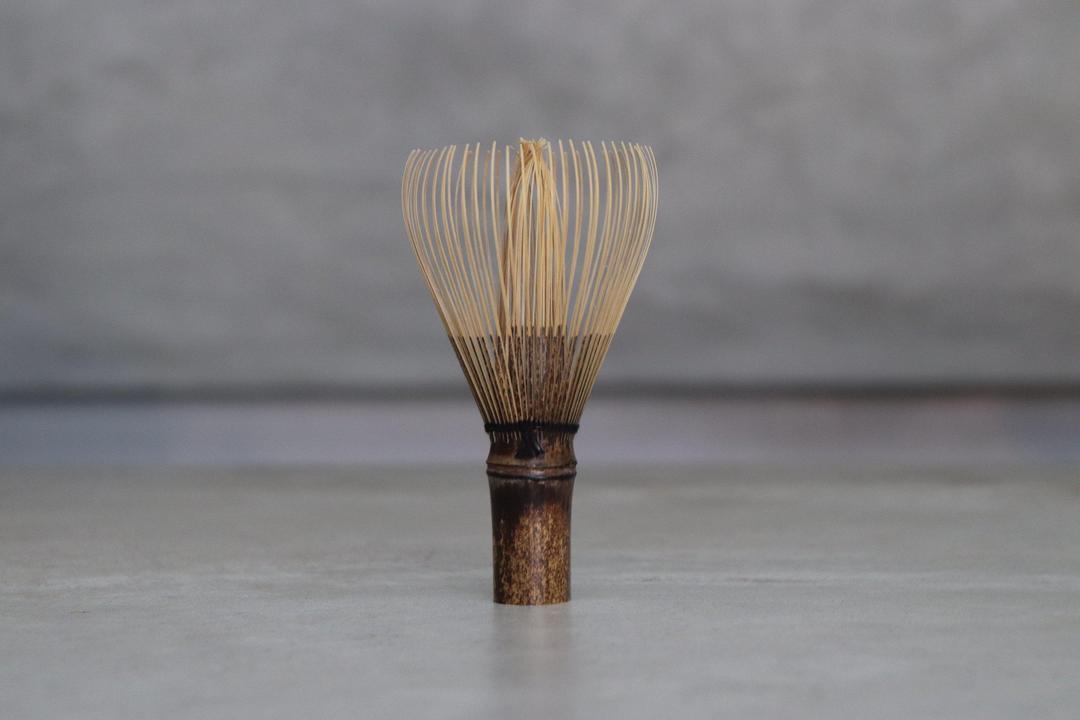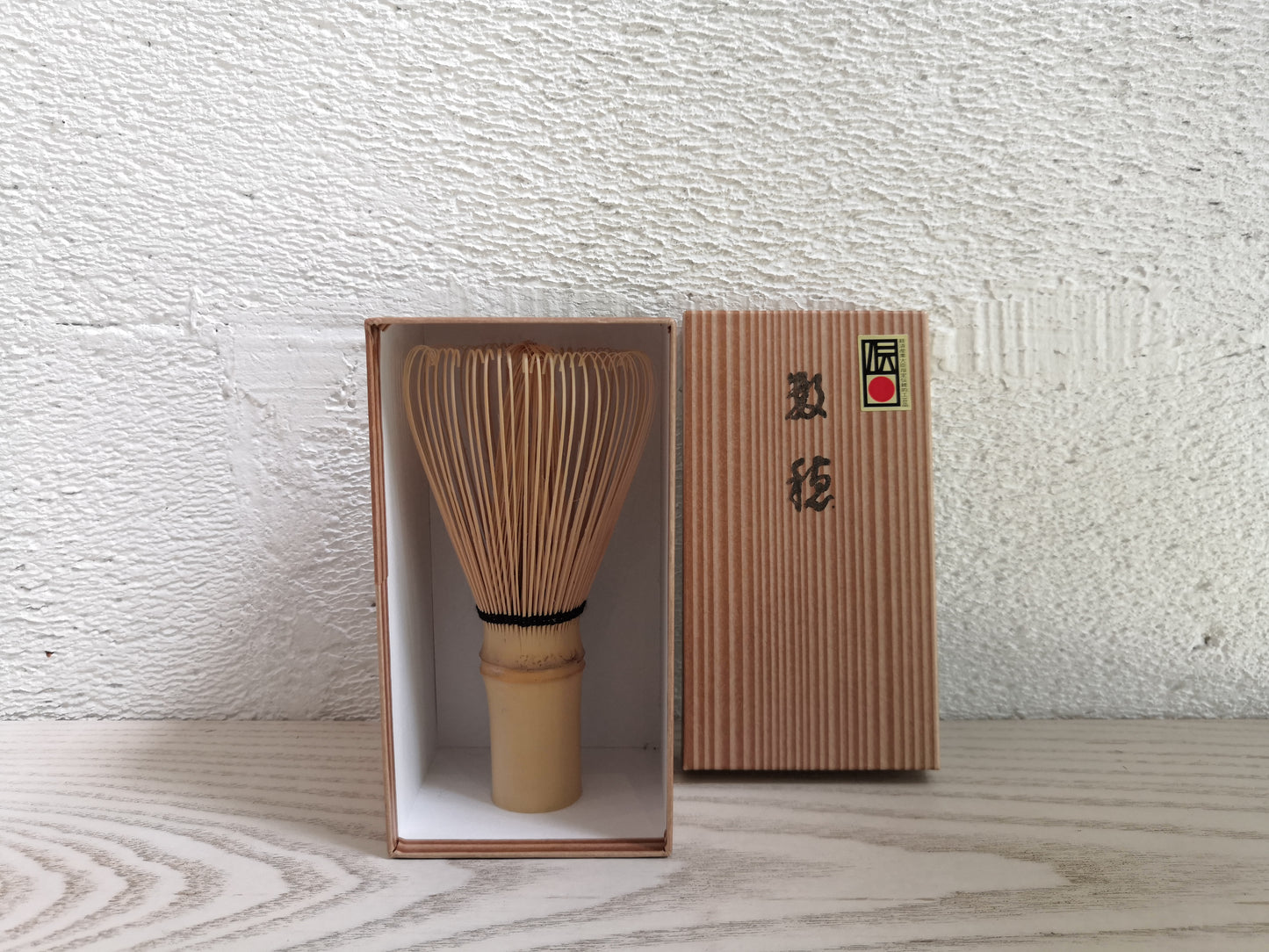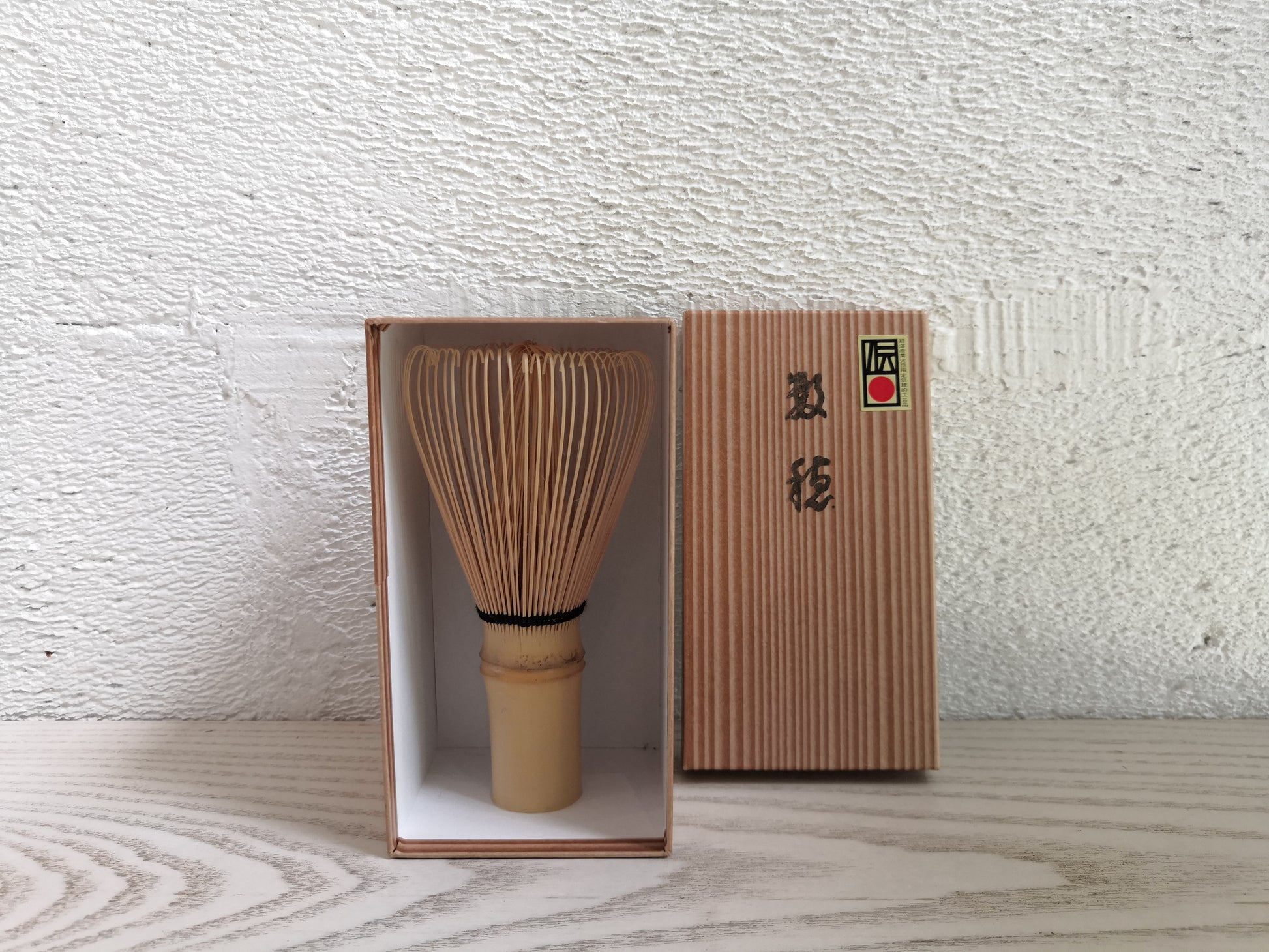Kurasu Thailand
Chasen (Tea whisk) Kurotake / Shiratake / Makoto / Nara
Chasen (Tea whisk) Kurotake / Shiratake / Makoto / Nara
ไม่สามารถโหลดความพร้อมในการรับสินค้าด้วยตนเองได้
- Each individually hand crafted and craved in Nara, Japan
- Crafted by one of only 15 chasen craftsmen left in Japan.
- Small production - only available in limited quantities
60-piece authentic Takayama chasen, using traditional Japanese chasen craftsmanship. Made in Nara, Japan
All processes are carefully handmade by craftsmen with traditional techniques, resulting in a beautiful chasen. Each will have slightly unique shape and coloring due to hand craft and carving.
The characteristic of the true chasen is that the egg-shaped curve cuts not only the tip but also the entirety, finished thinly and elastic, optimal to make fine matcha.
It is said that there are only about 15 chasen craftsmen in Japan today, and the highly skilled Takayama chasen is extremely skinful, and an excellent tool for making fine and smooth matcha. It is carefully made to be used for a long time.
History of Takayama Chasen
Born in Takayama in Ikoma, Nara Prefecture, about 500 years ago during the Muromachi period.
It is said that the tea master Murata Juko, who is said to be the founder of Wabi-cha, requested the production of a stirring tool suitable for the tea ceremony, and that it was created by Takayama Minbu-Irimichi Sosui. After that, the Takayama Chasen that was created was presented to Emperor Gotomimon. He was extremlly pleased with it, and received the name of "Takashi" from the emperor. Soseki was honored and worked hard to make chasen and improve his skills, and the manufacturing method became the story of the Takayama family. After that, when the Takayama family moved, the remaining 16 vassals entrusted the production of the chasen.
Manufacturing process
Takayama Chasen is made by carefully performing all the following eight steps by hand.
"Haratake"
Cut bamboo that has been aged for 2 to 3 years to the required size. Three types of raw materials are often used: white bamboo, black bamboo, and soot bamboo.
"Katagi"
The first step to make the tips. Peel the epidermis of the tip from the upper half of the node. Then divide the part that will be the tip with a kitchen knife. There are differences depending on the thickness of the bamboo, but the standard is at least 12 - 24 cuts.
"Kowari"
The process of breaking the part divided by the piece of wood into smaller pieces. When splitting, the sizes are split alternately.
"Aji Kezuri"
The process of making the most difficult and important tips that affect the taste of matcha. Carefully scrape the tips so that they are thinner than the roots. After that, the chasen gets squeezed so that it becomes round on the body to make it into shape.
"Mentori"
The process of scraping both corners of the chasen one by one and removing the corners. Eliminating the corners makes it difficult for the tea to adhere.
"First part / second part"
The process of performing the upper knitting by double threading to firmly fix the root of the lower knitted rising ear.
"Jyohen/ Gehen"
The process of determining the size of the chasen and adjusting the height and spacing of the falling ears and roots.
"Shiage"
The final process to correct the disorder of the tip and adjust the shape, height and interval to the tip.
Maintenance
Wash in luke warm water
Do not use dishwasher
Materials
Materials
About Yamato Toujiki
Arita, one of the most prestigious pottery producing regions of Japan, has been playing a fundamental role in providing trusty products to support Japanese culinary culture for more than 400 years. Among the manufacturers we met in Arita, Yamato Toujiki is one that was flexible and open to new designs and ideas, while still embracing traditional techniques.
The craftspeople there are truly meticulous in their work, not overlooking even the slightest difference in shape and carefully finishing each piece one by one.
As we went though countless prototypes, their professional inputs such as “this thickness tends to deform after firing” or “the angle of this curve could be adjusted a little more” has given us many new perspectives to give the design we envisioned an actual shape.
The precision in the craftspeople’s work we witnessed on our visit to Arita was truly remarkable. How they used potter’s wheel so naturally like breathing, and how a beautiful shape emerges from it- the moment we saw it, we realized that we are not just making something but also passing on this culture of the art.
Another thing that stuck with us was the atmosphere of the workshop. It was quiet but full of energy at the same time, the air filled with history and a proud craftspersonship.
“You never know until it comes out of the oven” they said- that’s why they treat each and every piece with such attention and precision, making adjustment along the way as needed. In their such work ethics we saw a shared sense of pursuing the ideal with our product designing process.
Kyoto Series is a product born through the hands of such craftspeople- it would be our pleasure if you could feel the warmth of human touch and their stories as you sip.
Dimensions
Dimensions
Product Specifications
3oz(95ml)
W80×H15.3×D55㎜
Diameter (Mouth opening): 55㎜
Capacity: 95ml
Weight: 90g
With package
W90×H52×D53㎜
Weight: 130g
6oz(185ml)
W95×H75×D70㎜
Diameter (Mouth opening): 70㎜
Capacity: 185ml
Weight: 160g
With package
W110×H80×D90㎜
Weight: 210g
8oz(250ml)
W105×H75×D80㎜
Diameter (Mouth opening): 80
Capacity: 250ml
Weight: 190g
With package
W120×H90×D90㎜
Weight: 260g
Made in Saga, Japan
Semi-porcelain
Sagan/Hasami
Care information
Care information
Maintenance Tips
While the product is dishwasher-safe, hand-washing is recommended for the product to last longer.
Scrubbing with abrasive detergent or metal scrubbers may scratch the product, so please wash with a soft sponge.
Avoid soaking the product in water for long. After washing, wipe with a soft dry cloth and dry well before storing in a well-ventilated place.
Please be careful not to apply strong impact, to avoid chipping and cracking.
Other note
Do not use in an oven, induction cooker, or over an open flame.
While this product is microwave-safe, do not use it without food on it or heat it for an extended period of time.
Sudden temperature changes (rapid heating and cooling) may damage the product. Even partial temperature changes may cause damage.
If cracks or fissures appear, stop using the product for safety reasons.
The surface of the product may develop small cracks during use, but this does not affect the quality nor usability. As the product is handmade, there may be individual differences in color and shape.




